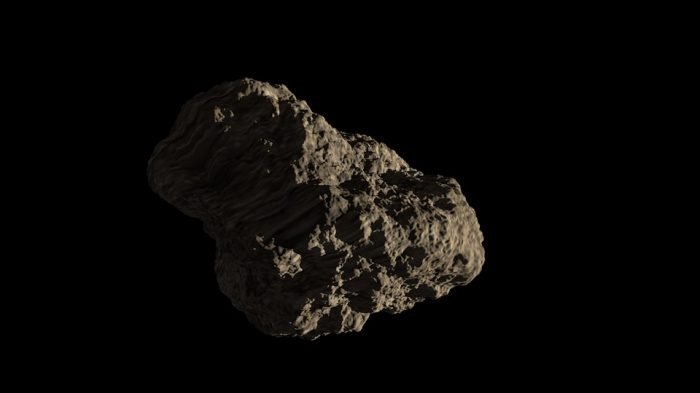Classification in Astronomy
Classification, i.e. putting things into groups based on their common characteristics, is a basic way of studying objects in many branches of science. Astronomy is, of course, no exception. That is why the question of Pluto being or not being a planet steered such a debate among planetary scientists. Examples of categories of the astronomical objects include stars on various stages of evolution, planets, moons of planets, brown dwarfs and so on. But there are spacey things that demonstrate fundamental features of more than one class of objects. Take, for example, active asteroids.
Asteroids, comets and everything in between
What is an asteroid and what is a comet?
You may say that an asteroid is a small space rock (high five to those who remember that asteroids reside in the Asteroid Belt between Mars and Jupiter) and that a comet is a “dirty ice ball” that grows tails when it gets close to the Sun.
Well, it turns out that the distinction between those two types of small Solar System bodies is not as clear as we though.
Recently, astronomers started discovering very peculiar objects: asteroids that grow comet-like tails, the so-called active asteroids. In some literature they might be called Main-belt comets, but the correct way is to say that main-belts comets are a subclass of active asteroids. To date, only twenty such objects have been found. Not much, we know, but they do exist nevertheless. So the question arises: what are they, asteroids with tails or comets that pretend to be asteroids? Or maybe something else altogether?
Active asteroids
Active asteroids have comet-like appearance and asteroid-like orbits. They sport short-lived comas and tails, but at the same time their orbital parameters tell us that they are asteroids and nothing else! Although all active asteroids have these features, the actual mechanism that drives such behavior is different in different active asteroids.
First active asteroids
It all started with an object called 4015 Wilson-Harrington. Discovered in 1949 as a comet, it was soon lost and rediscovered a few decades later as an asteroid. It took until 1992 for the observers to figure out that the two were in fact the same thing! The next bizarre celestial object with a similar behaviour was identified in 1996. That was 7968 Elst-Pizzaro. Known since 1979, this Asteroid Belt resident with a period of 5.62 years went bananas in 1996 and grew a tail that was visible for a few months. Actually, it also showed a tail in the later observations in 2001 and 2007, that is once every orbit near the point closest to the Sun (i.e. at perihelion).
Why asteroids grow tails
Many other active asteroids we know behave the same way, i.e. their activity is recurring and happens near perihelion. This is a typical comet behaviour and the reason for it is well understood: sublimation of the surface volatile materials. Or, in volatile-poor asteroids, thermal fracture (similar to mudcracks on Earth). That’s what’s happening to the famous “comet rock” 3200 Phaeton, the parental body of the December Geminid meteor shower. On the other hand, a few active asteroids show repeated activity at a great distance from the Sun that therefore has nothing to do with heating. A more exotic mechanisms, such as rotational breakup, cryovolcanism or even component rubbing in a binary asteroid might be responsible for the tail-making here.
And, finally, some active asteroids have only been seen “active” once. In that case scientist suspect that a collision with another body caused an asteroid to loose material and exhibit tail. This is likely the case with asteroids 354P/ LINEAR and 596 Scheila.
Recent discoveries
-
(6478)Gault
Main Belt asteroid Gault was first spotted in 1988. In early 2019 two sky surveys, Zwisky Transient Facility (Palomar Observatory, California) and Asteroid Terrestrial-impact last alert system (Hawaii) reported the discovery of Gault’s comet-like tail.
The news encouraged observers to point their telescopes to Gault to see what was going on there. Xingming Observatory in China followed the asteroid from January to April 2019 (read the full paper here). At the same time scientists started to comb through the old image database in hope of spotting the signs of Gault’s past “comet activity” (read the full paper here). They found that indeed Gault has been demonstrating the outbursts of come-like behaviour since 2013.
Interestingly, there is no correlation between the activity of the asteroid and the distance to the Sun. Astronomers suspect that the material loss in Gault can be explained by its too-fast rotation (which in turn is a result of a Yarkovsky-Keefe-Radzievskii-Paddack effect).
With only a handful of active asteroids known to date, this is a very exciting discovery!
-
101955 Bennu
Another object that surprised scientists this January is Near-Earth asteroid Bennu. Bennu is currently being explored by NASA asteroid sample-return mission OSIRIS-REx. At the start of the year the spacecraft watched Bennu eject material on more that 11 occasions over the course of one month. The ejected particles ranged in size from centimeters to tens of centimeters. They moved slowly and therefore ended up either orbiting around Bennu or raining back on its surface. At the moment scientist have no clue what is going there. Luckily, OSIRIS-REx has until the summer of 2023 (that’s when the spacecraft is expected to start its journey home) to find out!
Still curious?
Visit our portable planetarium, send your questions and comments to our inflatable space dome team or check out our other resources for more information about asteroids and comets!
- Blog post Asteroids, friends or foes? Part one: foes! (all about asteroid hazard, Near-Earth asteroids and impact avoidance strategies)
- Blog post Asteroids, friends or foes? Part 2: friends! (all about why we study asteroids and how we plan to mine asteroids in the future)
- Lesson Plan (with additional resources) Small bodies of the Solar System: asteroids, comets and meteoroids

